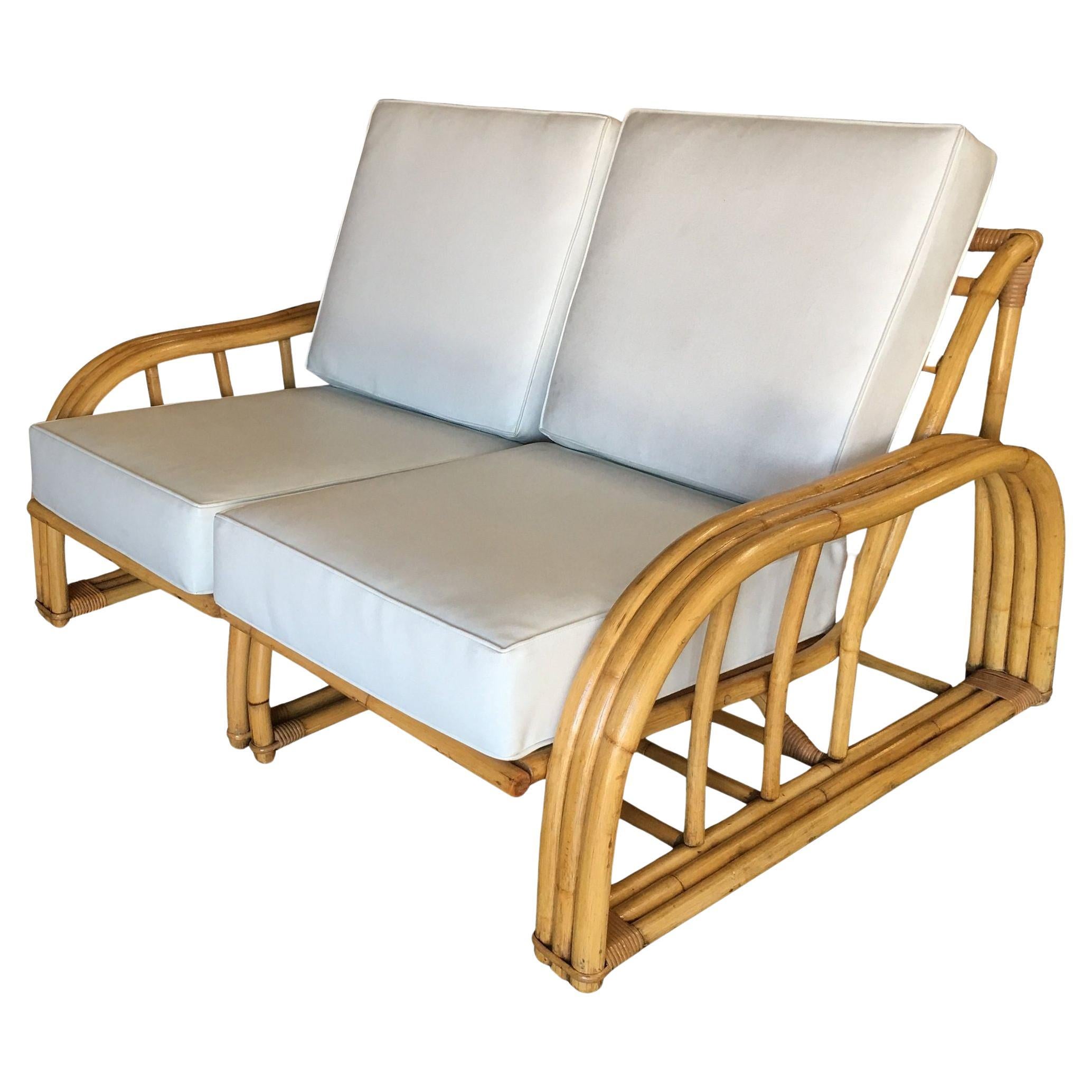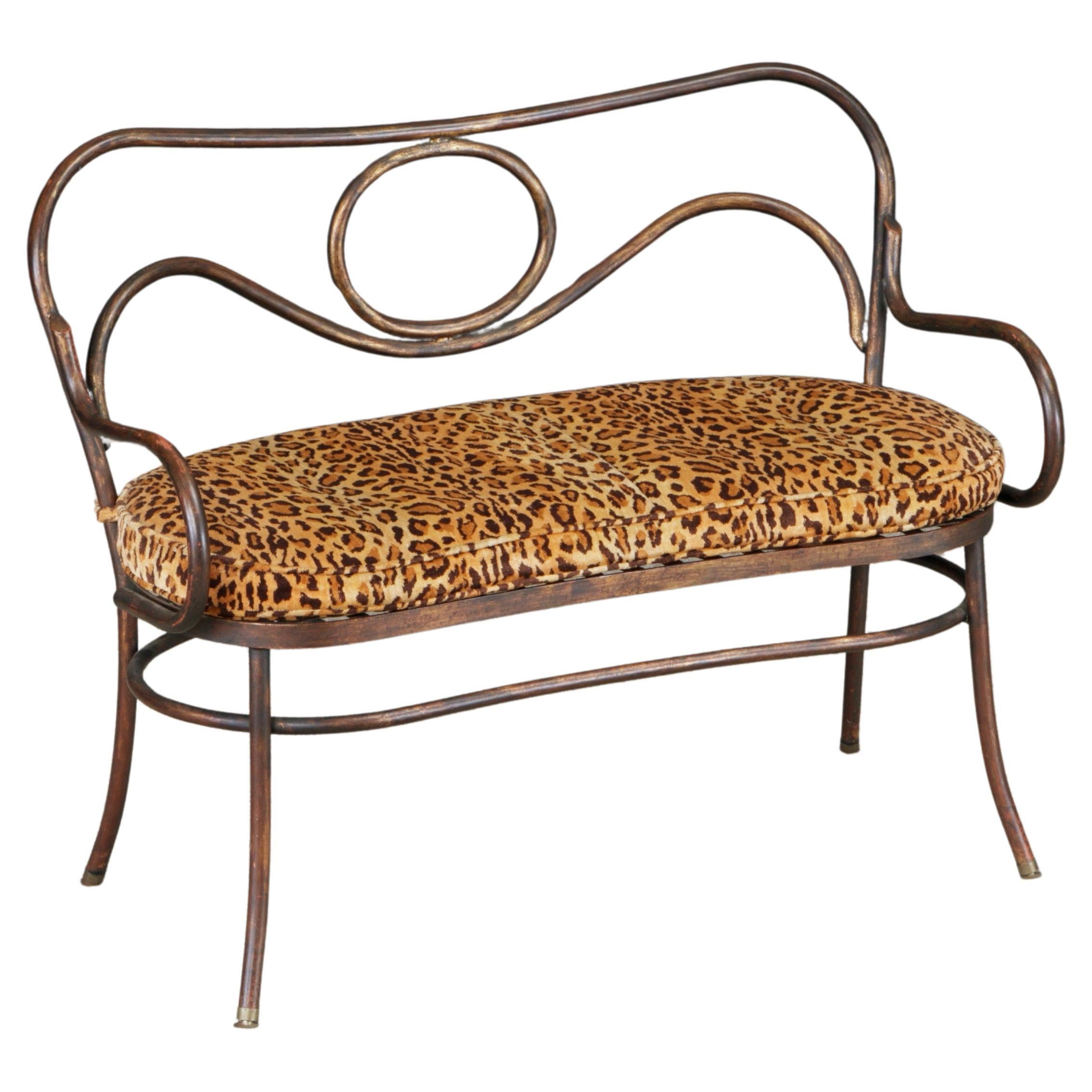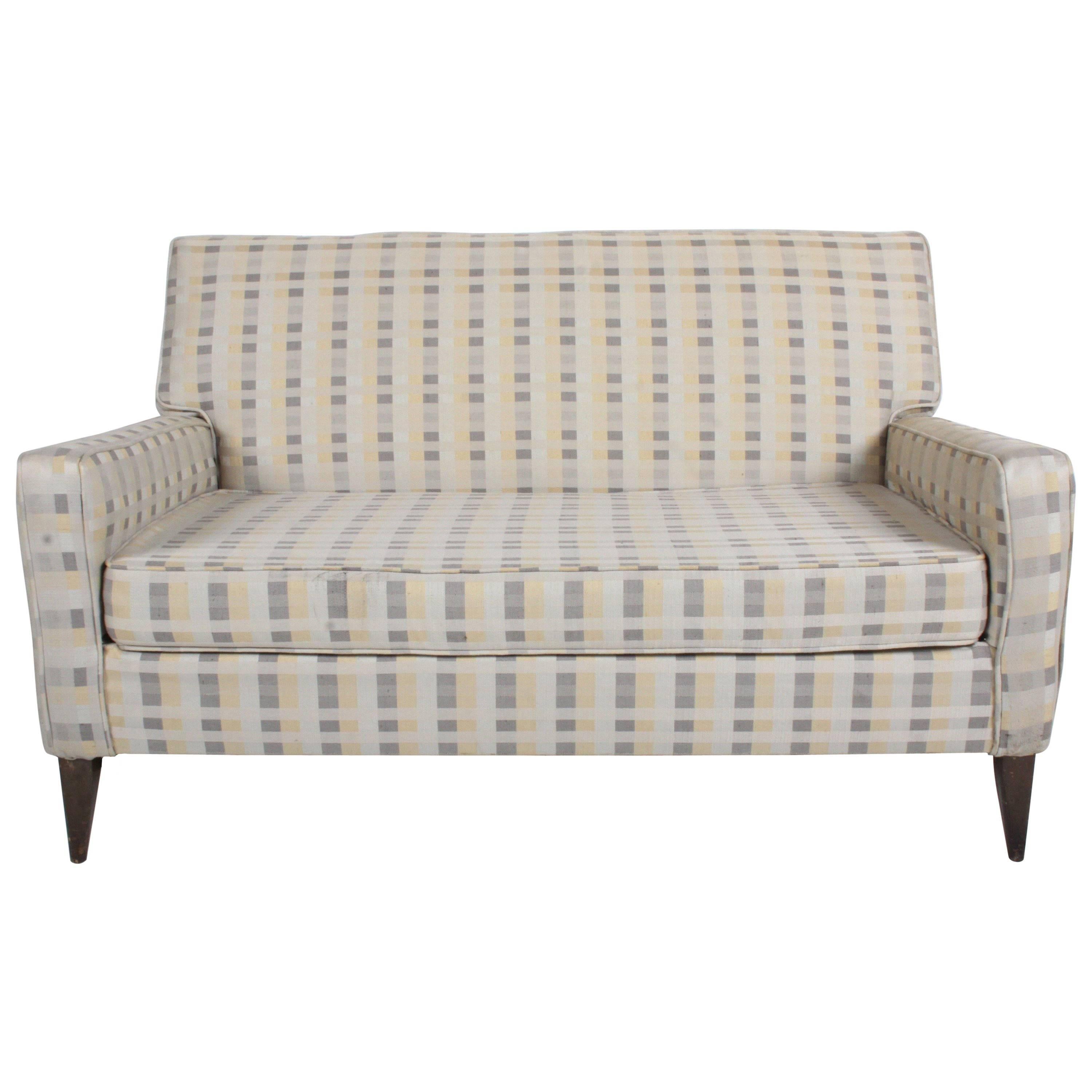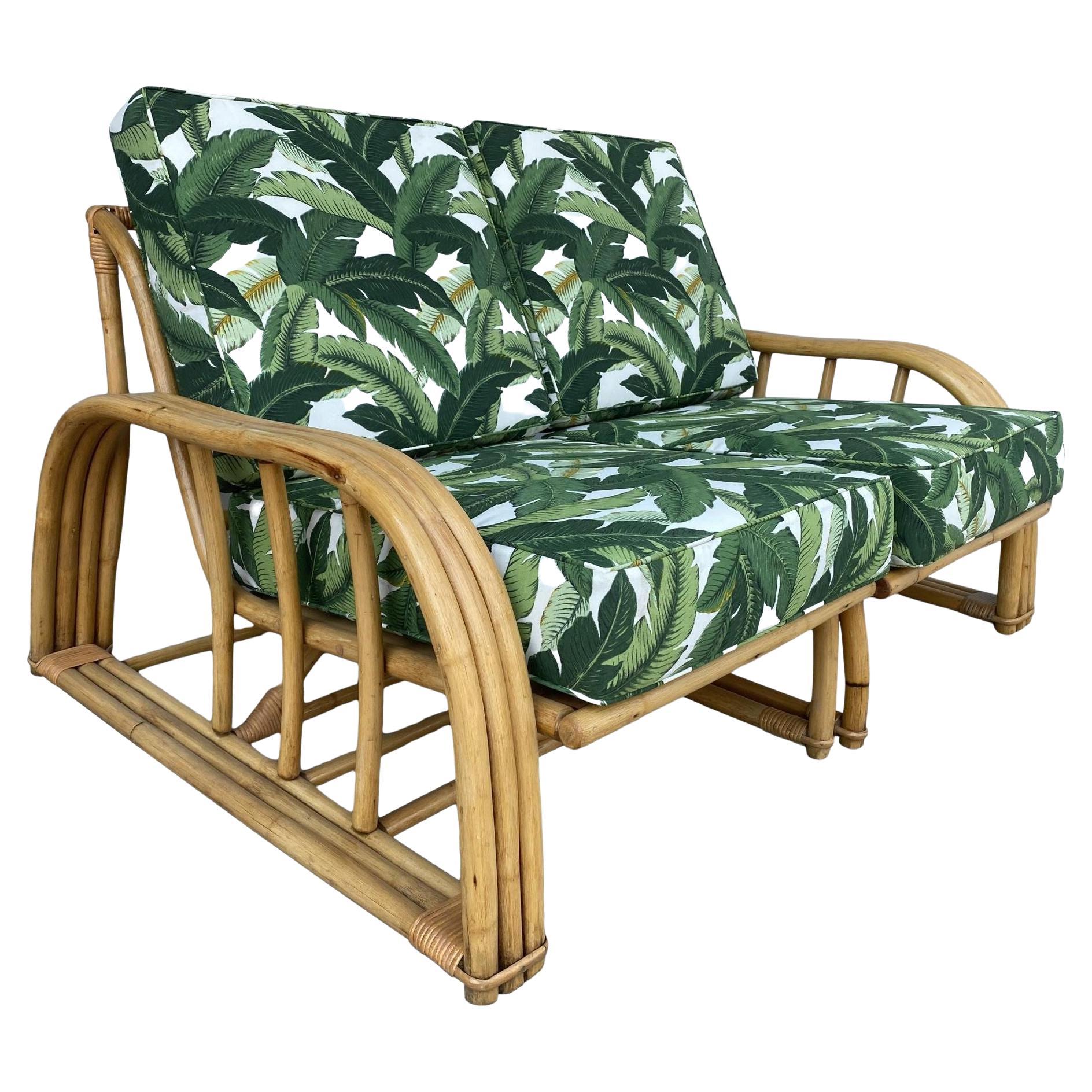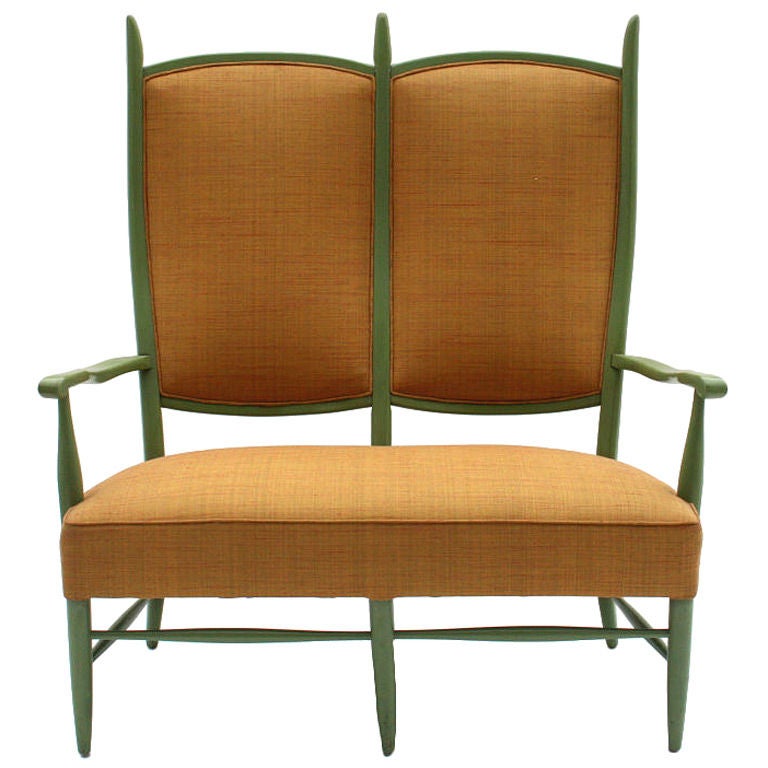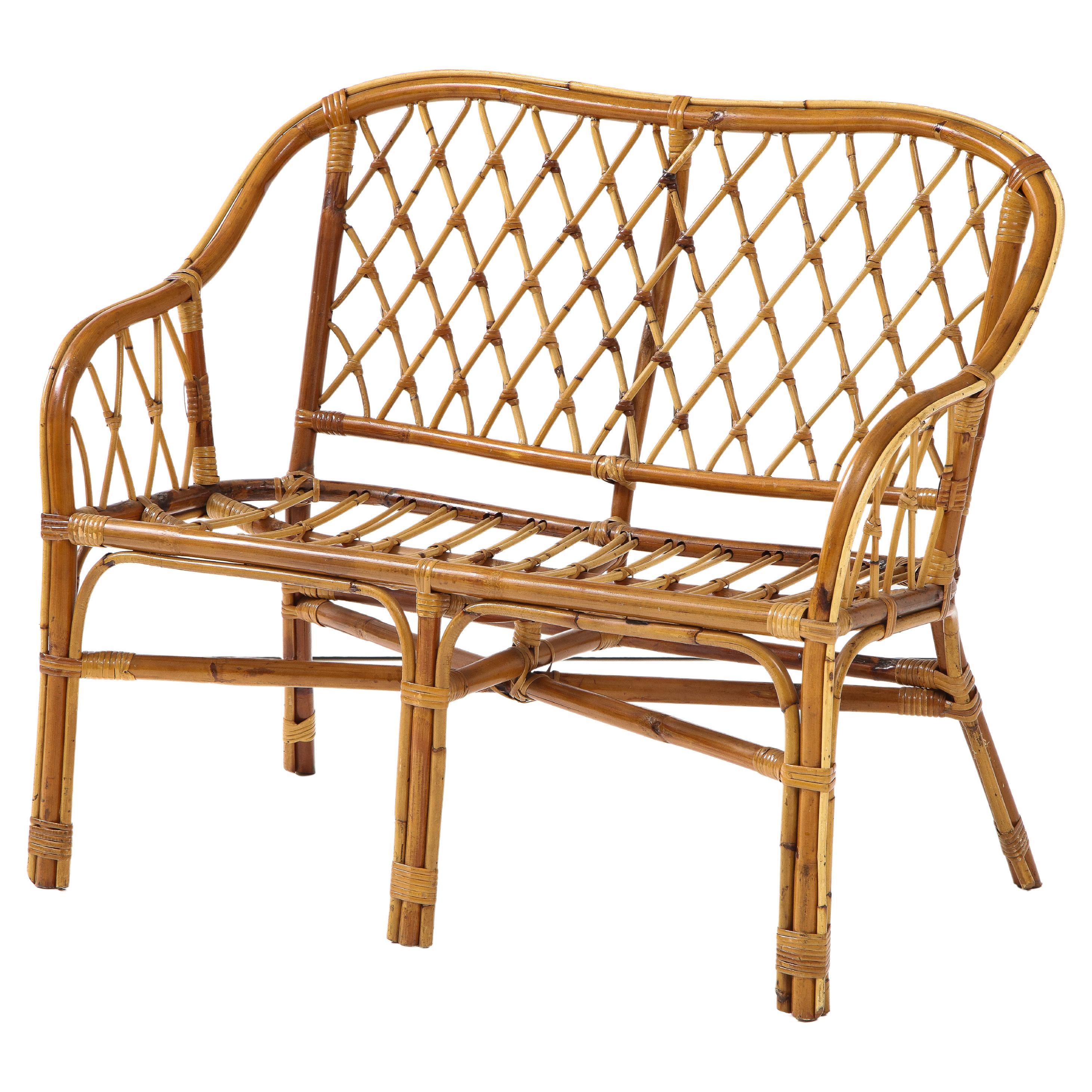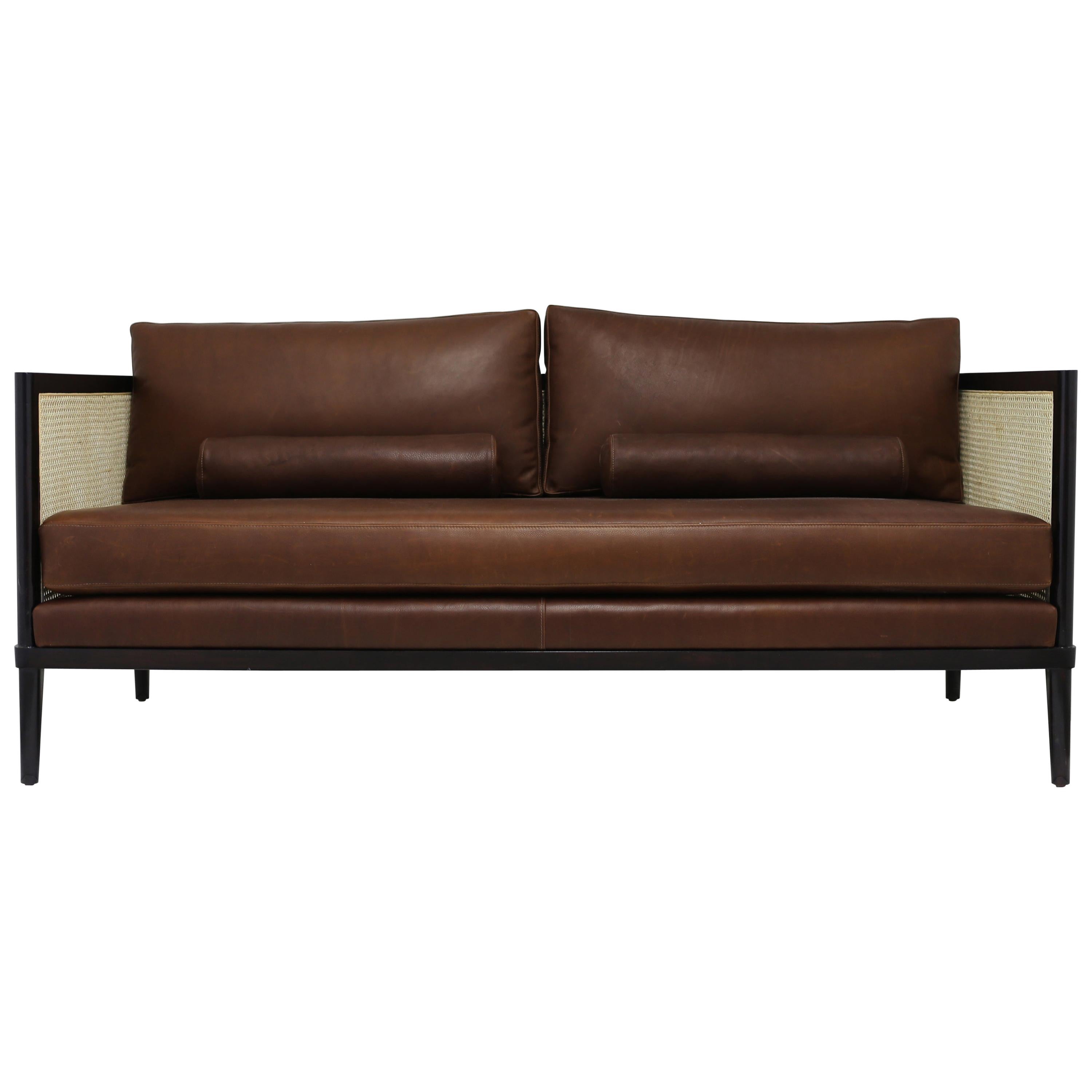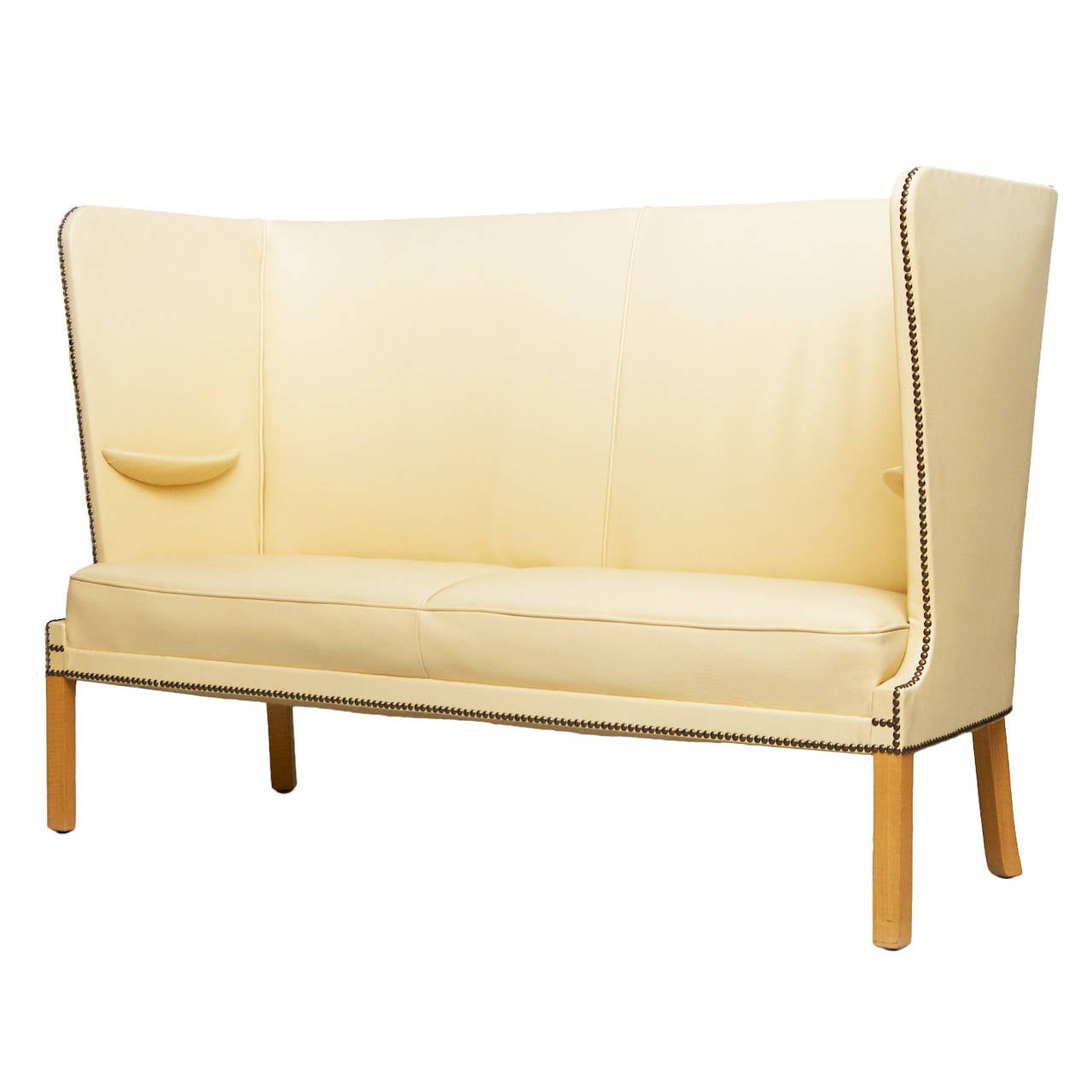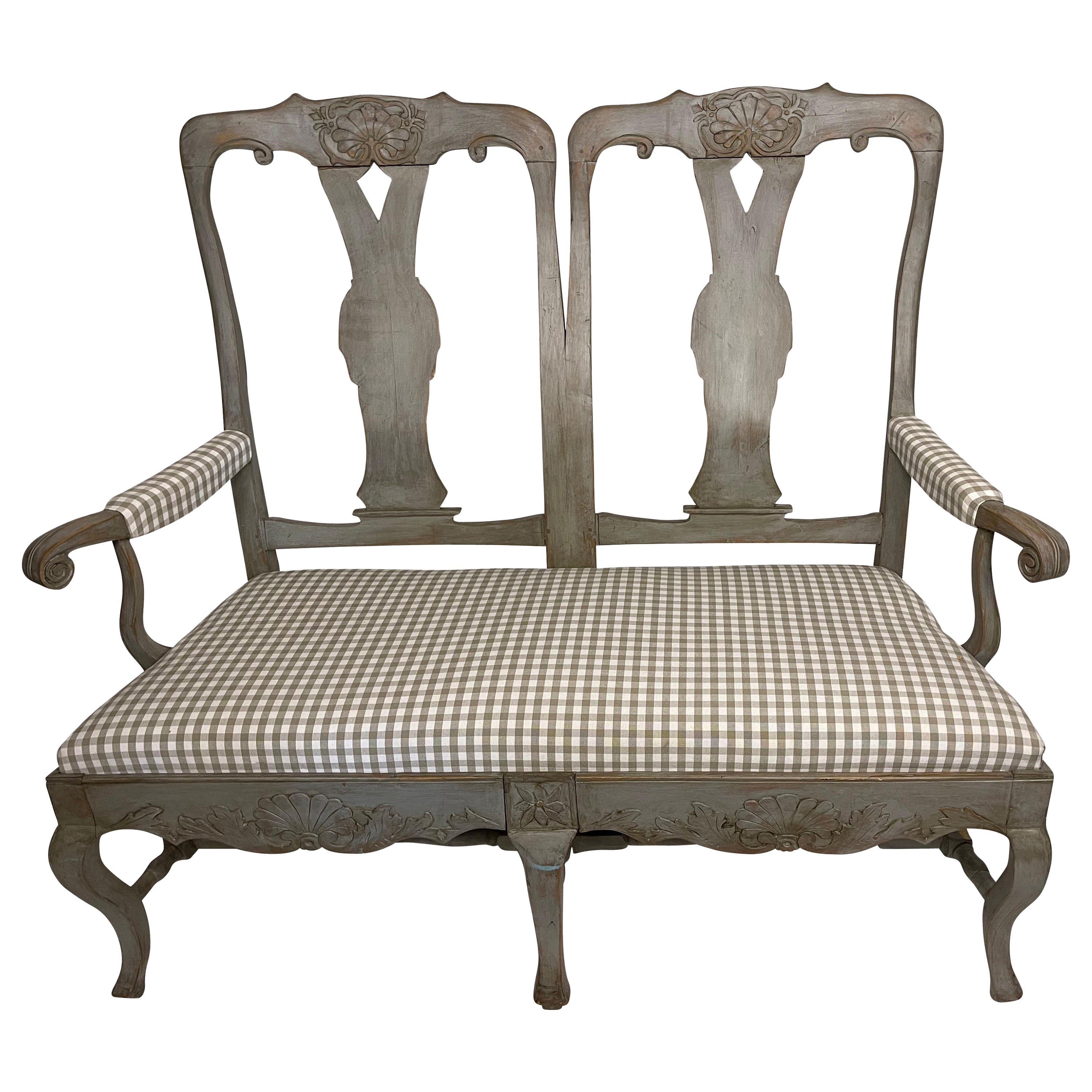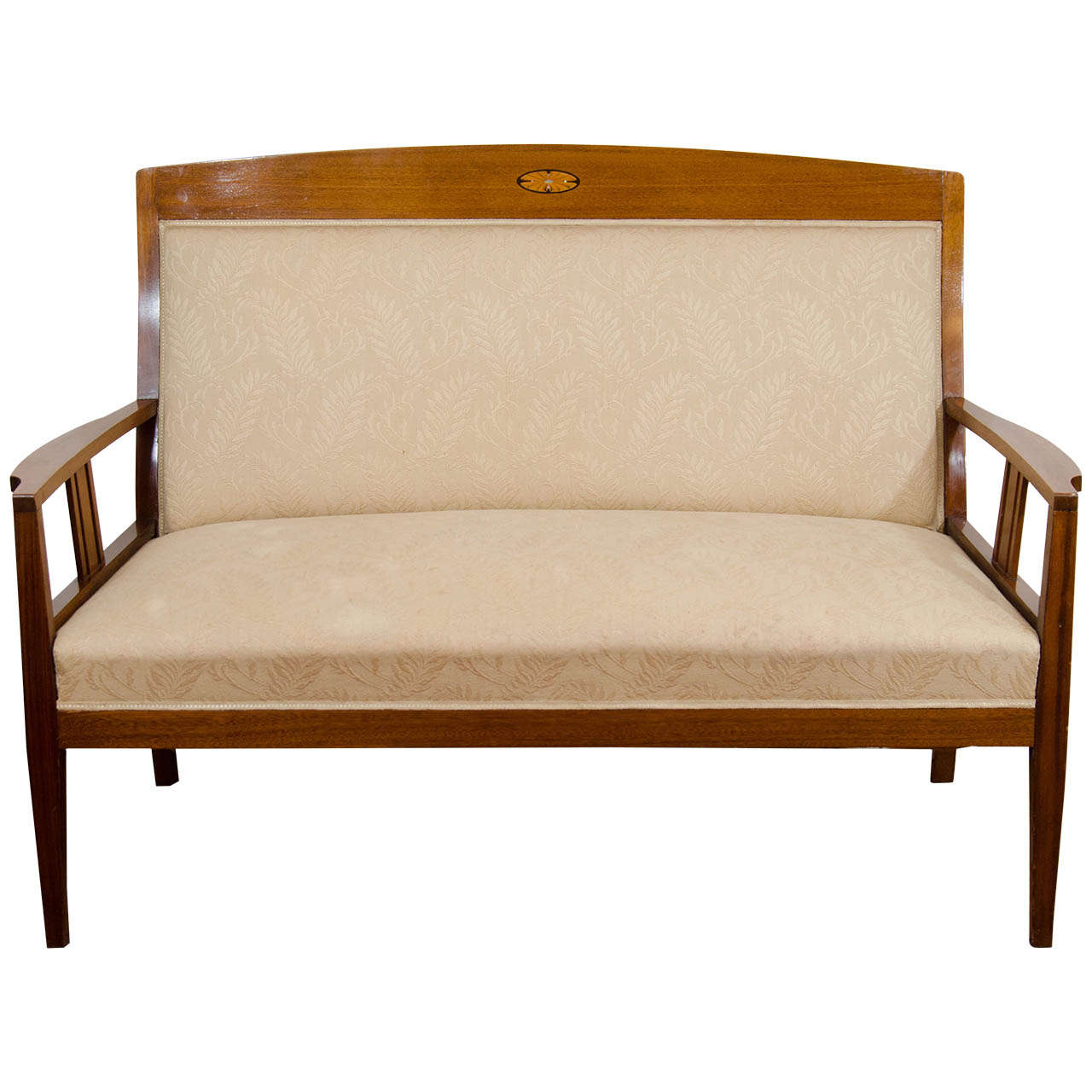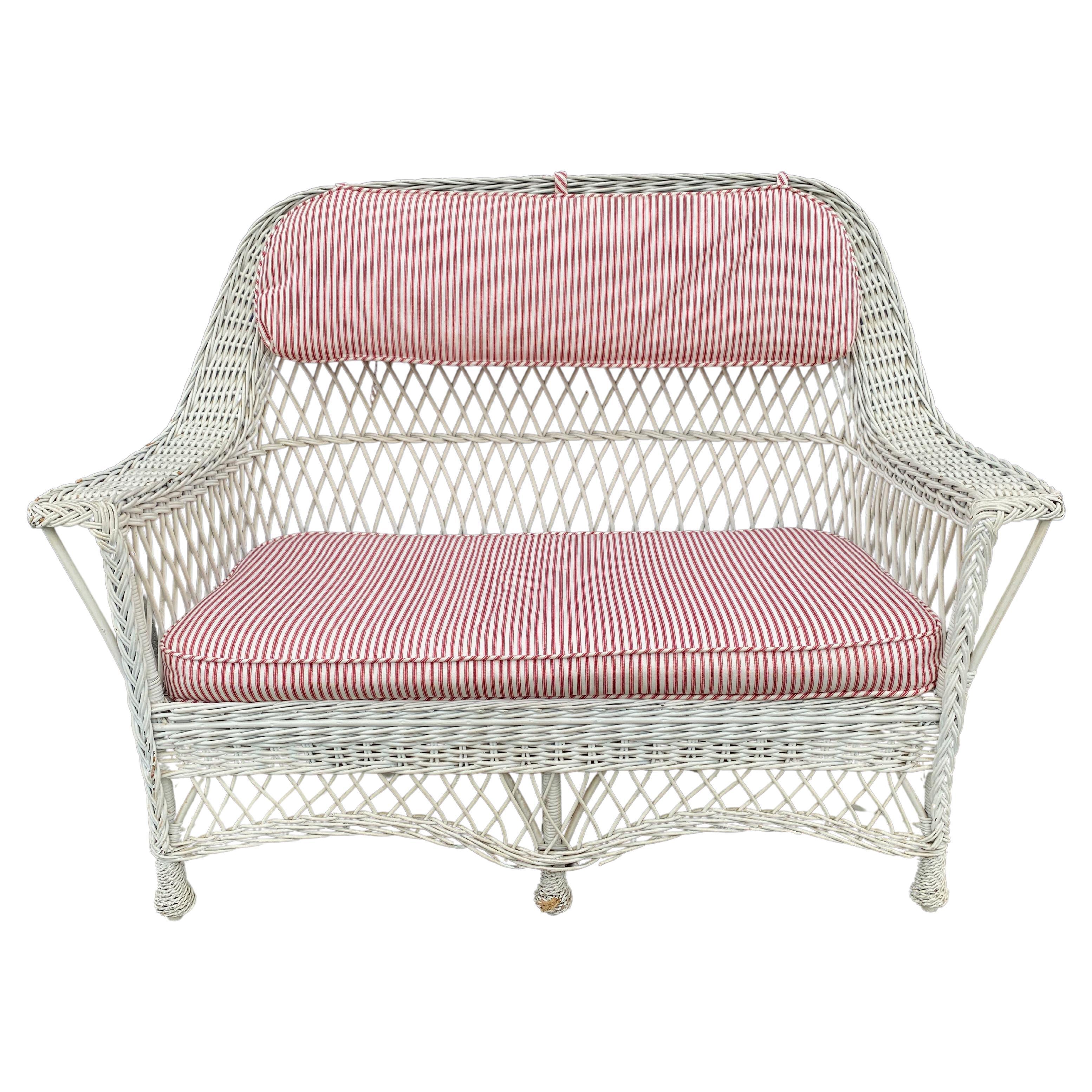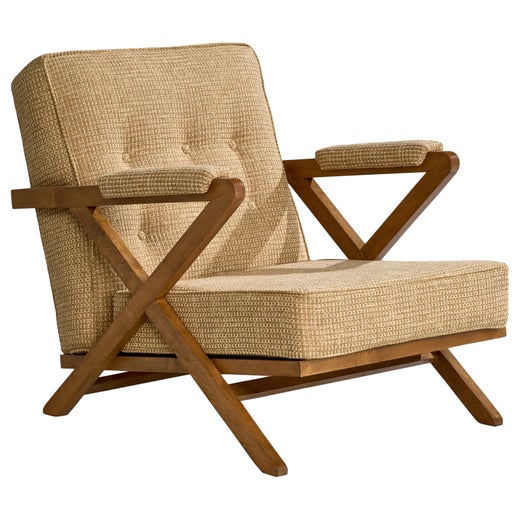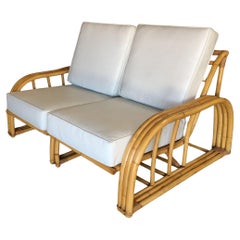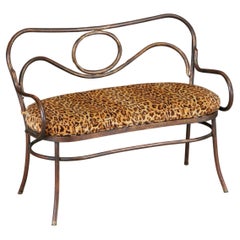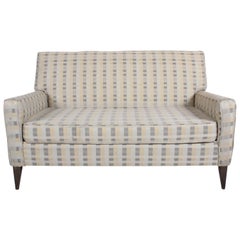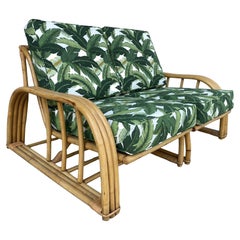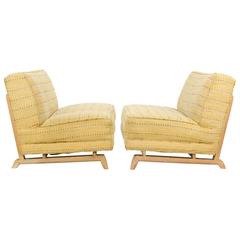
Historically Significant Paul Laszlo Settees with Maria Kipp Fabric
View Similar Items
Historically Significant Paul Laszlo Settees with Maria Kipp Fabric
About the Item
- Creator:
- Dimensions:Height: 30 in (76.2 cm)Width: 48 in (121.92 cm)Depth: 31 in (78.74 cm)Seat Height: 17.5 in (44.45 cm)
- Sold As:Set of 2
- Style:Mid-Century Modern (Of the Period)
- Place of Origin:
- Period:
- Date of Manufacture:1960
- Condition:Wear consistent with age and use. These need total restoration. Hence the price.
- Seller Location:Portland, OR
- Reference Number:1stDibs: LU79066762373
Paul Laszlo
The suave architect and interior designer Paul Laszlo made his reputation in Hollywood, where his clients included Barbara Stanwyck, Cary Grant and Elizabeth Taylor. He was aligned to no artistic or design movements, relying on his own carefully honed instincts to create his celebrated lounge chairs, tables, dressers and other furnishings. From the late 1930s to the 1960s, Laszlo’s name was a byword for sumptuous modernity among members of the smart set.
Born in Hungary in 1900, Laszlo learned about quality from his father, a prosperous furniture manufacturer. He studied design in Vienna and had his technical training in Stuttgart, Germany, where, at age 27, he established an upscale design business that gained an international reputation. Nine years later, with the Nazis in power, Laszlo, a Jew, left Germany for the United States and made his way to Los Angeles. There, he established an interior design office in Beverly Hills and was pleased to find that his Stuttgart credentials carried weight.
While he took many commercial assignments for American department stores, custom residential work was Laszlo’s stock in trade. He turned his hand to every element in a room, “down to the last ashtray,” Time magazine once wrote. Like his clients, Laszlo appreciated luxury — not the luxury of rare and precious materials, but the luxury of rich colors and textures, and deep comforts. He had a contemporary élan, exemplified by spaces that were bright, airy, uncluttered and up-to-date.
The classic earmarks of Laszlo’s furnishings are generous proportions and, in the case of his Paddle and Plank armchairs, namesake armrests that are flat and wide, the perfect spot to rest a cocktail. His case goods, tables and dining chairs have clean, elegant lines; they are simply formed yet warm, with interesting details such as woven veneer door fronts.
In recent years, Laszlo’s designs have found a new audience among fans of his easygoing modernism. Prices are in the neighborhood of $5,000 for his vintage cabinets, and from $8,000 to upwards of $20,000 for seating pieces, which are generally found in pairs or groups of six or more.
There was a reason that Laszlo’s work was so admired in the mid-20th century: every design contributes to an environment that is comfortable and elegant — at once robust and relaxed.
Find vintage Paul Laszlo furniture on 1stDibs.
Brown Saltman
The enduring modern design legacy of Brown Saltman was born from the collaboration between designer Paul Frankl and furniture manufacturer David Saltman. Together, they created stunning mid-century modern solid wood furniture with Art Deco influences. Brown Saltman side tables, cocktail tables and credenzas are known for their thoughtful designs and exquisite details.
Frankl was a leading American designer who came to prominence in the 1930s by making rattan furniture for Hollywood stars. However, he dreamed of bringing his designs to the public. That chance came in 1939, when he met Saltman at a party. Saltman was the head of the Los Angeles-based Brown Saltman, which, at the time, specialized in furniture reproductions.
He asked Frankl to create a furniture line, which was released in 1941. It was a hit, with sales exceeding expectations. Frankl quickly started work on a new line for mass production. It featured simplified designs and less expensive materials like combed wood and textured plywood. This line was even more successful, and Frankl started on a third.
In 1942, Frankl and Saltman signed an extended contract to continue their collaboration. However, Saltman died in a traffic accident the next day. World War II also brought Brown Saltman production to a standstill. After the war ended, Frankl decided not to renew his contract.
Brown Saltman partnered with many other designers over the years. A walnut sideboard by Van Keppel-Green for Brown Saltman was featured in the Museum of Modern Art’s 1950-51 Good Design exhibition. Architect and interior designer Paul Laszlo also designed a commercial furniture line for the company in the 1950s.
Brown Saltman dissolved in 1960, but its well-built and beautifully designed furniture remains in high demand today.
On 1stDibs, find vintage Brown Saltman tables, storage cabinets, seating and more.
You May Also Like
Vintage 1940s American Mid-Century Modern Settees
Rattan
20th Century Unknown Mid-Century Modern Settees
Bronze
Vintage 1950s American Mid-Century Modern Loveseats
Upholstery, Wood
Vintage 1950s American Settees
Rattan
Vintage 1950s American Mid-Century Modern Settees
Upholstery, Wood
Vintage 1950s Italian Mid-Century Modern Loveseats
Bamboo
